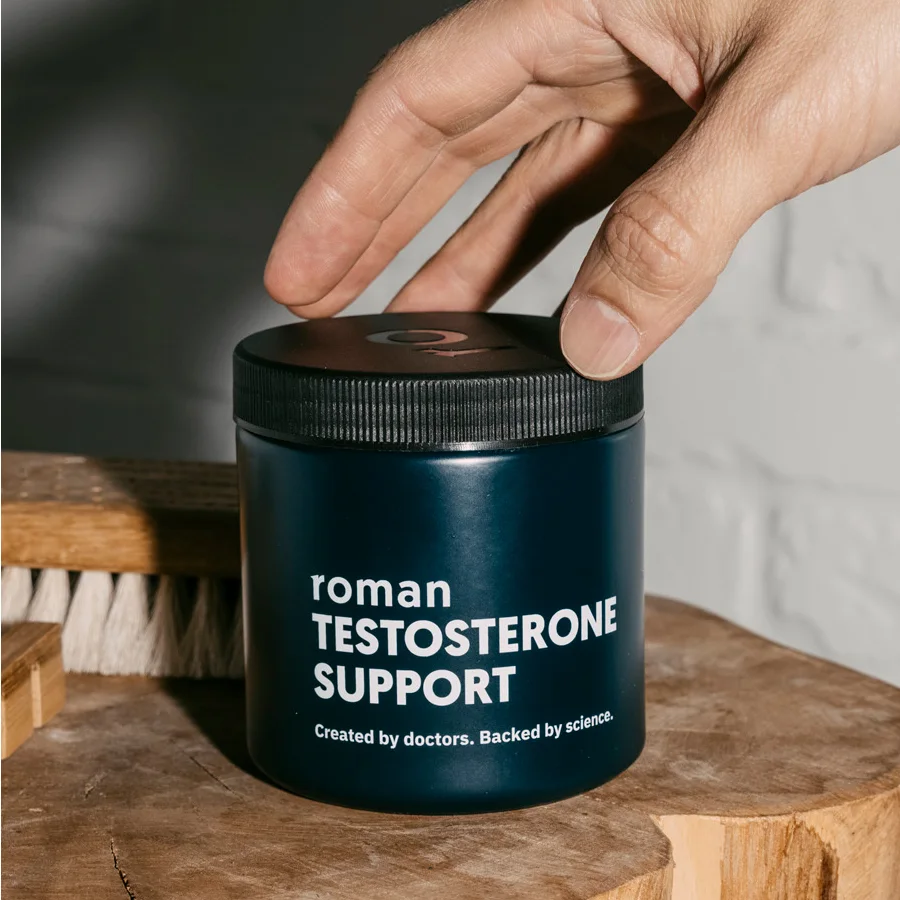Here's what we'll cover
Here's what we'll cover
Here's what we'll cover
Just like fashions go out of style, sometimes medications do, too. However, it’s for far better reasons than what the latest issue of Vogue deems in style.
In the case of testosterone propionate, better options for testosterone replacement therapy (TRT) have come on the market, making this form of testosterone mostly obsolete. Here’s why healthcare providers stopped prescribing testosterone propionate, as well as some of the other TRT options out there.
What is testosterone propionate?
Testosterone propionate, which used to be available under the brand name Testoviron, is an injectable form of testosterone no longer found in the United States. It’s still available in other countries including Abu Dhabi, Australia, Belgium, Hong Kong, Latvia, New Zealand, Saudi Arabia, and the United Kingdom (Yoon, 2019).
Testosterone propionate fell out of favor when longer-acting forms of testosterone hit the market. These longer-acting products (like testosterone enanthate, testosterone cypionate, and testosterone undecanoate) require fewer doses and have better safety profiles. Today, they are the mainstays of TRT (Petering, 2017).
The biggest problem with testosterone propionate is its short half-life. The half-life of a drug is a pharmacology measurement of how long it takes your body to get rid of it. The longer the half-life, the longer a medicine can stick around and do its job. Because of its short half-life, you’d need to take several injections intramuscularly every week to reach an adequate level of testosterone (Rey, 2020).
While the manufacturer discontinued the drug, it wasn’t because of safety or efficacy reasons––likely it was because there were better options available (Yoon, 2019).
Even though testosterone propionate is not prescribed as a medication anymore, it’s often used in scientific experiments that need a quick-acting hormone (Park, 2019).
Why is testosterone so important?
Testosterone is a male sex hormone (or androgen) that plays a role in sexual health and the development of male characteristics during puberty.
Testosterone plays a vital role in health throughout our entire lives. Low levels of this hormone may cause the following symptoms (Sizar, 2021):
Sexual issues like loss of libido (sex drive) or erectile dysfunction
Mood disorders including depression and anxiety
Loss of bone mineral density
Changes in red blood cells
Changes in muscle mass and body fat composition
Fertility issues
Other forms of testosterone
Testosterone propionate is no longer used in healthcare, but several newer derivatives of testosterone have replaced it. Some other types of TRT available include (Petering, 2017):
Testosterone cypionate (brand name Depo-Testosterone), intramuscular injection
Testosterone undecanoate (brand name Jatenzo), taken by mouth
Testosterone enanthate (brand name Delatestryl), taken by injection
Testosterone nasal gel (brand name Natesto), applied to the nose
Testosterone topical gel (brand names Androgel, Fortesta, and Testim), applied to the skin
Testosterone patch (brand name AndroDerm), applied to the skin (DailyMed, 2020)
Each testosterone formulation comes with different directions, so make sure to take the dose prescribed by your healthcare provider. All forms of testosterone for TRT require a prescription from your healthcare provider.
Uses for testosterone replacement therapy
Testosterone replacement therapy can be helpful for treating conditions like hypogonadism (low T), gender dysphoria, and androgen deficiencies (Petering, 2017):
As we mentioned, testosterone is known for its “androgenic” properties in men like developing body hair and maintaining a sex drive. But it has involvement in many bodily functions in both men and women.
Testosterone plays a role in the strength of your bones and the way you process cholesterol. Testosterone is also related to how your body forms fat. Interestingly enough, it can be found at lower levels in people who are overweight or obese (Nassar, 2021).
Clinical trial participants who took T showed a significant benefit in symptoms associated with hypogonadism (Snyder, 2018). T can also have significant benefits in transgender men suffering from the anxiety and distress associated with gender dysphoria (Hembree, 2017).
Low levels of testosterone can happen for several reasons, including (Nassar, 2022):
Certain cancers, as well as chemotherapy
Damage to the pituitary gland (the part of the brain that tells your body to make testosterone)
Low levels of certain hormones (including GnRH or gonadotropin-releasing hormone)
Obesity
Aging (this is the most common cause of low T)
Risks of TRT
As men age, their testosterone levels naturally decline. While it might seem beneficial to administer testosterone to older men, TRT is not officially FDA-approved for age-related hypogonadism. Still, many healthcare providers prescribe testosterone replacement therapy off-label to patients in this category (Saad, 2017).
TRT can be harmful and should be avoided in patients with certain conditions, including (Nassar, 2022):
People suffering from heart failure or uncontrolled high blood pressure
Those at increased risk for heart attacks
Types of breast cancer and prostate cancer
Certain blood conditions
TRT is especially risky for those with heart issues; the U.S. Food and Drug Administration (FDA) released an official safety notification to reflect the potential risk of heart problems in certain patients taking testosterone (FDA, 2015). TRT may also increase your risk of hepatic adenomas (a benign or non-cancerous liver tumor) and other liver issues (Nassar, 2022).
Side effects of testosterone replacement therapy
Although rare, it’s possible to have a severe allergic reaction to injectable or topical testosterone. If you experience any severe symptoms (hives, swelling, or shortness of breath), do not take a second dose of testosterone and seek immediate medical care.
Testosterone is a controlled substance and does have the potential for abuse. Taking more than prescribed or using testosterone with anabolic steroids can lead to immediate and life-threatening health consequences like like a heart attack.
Although hormone therapy can be beneficial in many ways, it does come with a risk of adverse effects including (Nassar, 2021):
Pain or itching at the injection or application site
Gynecomastia (enlargement of breasts in men)
Headaches
Benign enlargement of the prostate
High blood pressure
Increases in calcium levels
Edema (fluid retention)
Changes in the blood that could lead to increased red blood cell counts and deep vein thrombosis (blood clot)
If you take other medications and are considering starting TRT, talk to a healthcare professional about all of the medicines you take. Also keep in mind that testosterone can have interactions with other medicines you take.
Get the help you need
If you're suffering from low T or gender dysphoria symptoms, get medical advice from a healthcare provider. Testosterone replacement therapy in one of its many forms may be right for you.
DISCLAIMER
If you have any medical questions or concerns, please talk to your healthcare provider. The articles on Health Guide are underpinned by peer-reviewed research and information drawn from medical societies and governmental agencies. However, they are not a substitute for professional medical advice, diagnosis, or treatment.
References
DailyMed. (2020). Androderm–testosterone patch. Retrieved on Feb. 1, 2022 from https://dailymed.nlm.nih.gov/dailymed/drugInfo.cfm?setid=e58a5328-fdd9-40cb-a19f-8ed798989b9c .
Elagizi, A., Köhler, T. S., & Lavie, C. J. (2018). Testosterone and cardiovascular health. Mayo Clinic Proceedings , 93 (1), 83–100. doi: 10.1016/j.mayocp.2017.11.006. Retrieved from https://pubmed.ncbi.nlm.nih.gov/29275030/
Gava, G., Mancini, I., Cerpolini, S., Baldassarre, M., Seracchioli, R., & Meriggiola, M. C. (2018). Testosterone undecanoate and testosterone enanthate injections are both effective and safe in transmen over 5 years of administration. Clinical Endocrinology , 89 (6), 878–886. doi:10.1111/cen.13821. Retrieved from https://pubmed.ncbi.nlm.nih.gov/30025172/
Hembree, W. C., Cohen-Kettenis, P. T., Gooren, L., Hannema, S. E., Meyer, W. J., Murad, M. H., et al. (2017). Endocrine treatment of gender-dysphoric/gender-incongruent persons: an endocrine society clinical practice guideline. The Journal of Clinical Endocrinology and Metabolism , 102 (11), 3869–3903. doi:10.1210/jc.2017-01658. Retrieved from https://pubmed.ncbi.nlm.nih.gov/28945902/
Mulhall, J. P., Trost, L. W., Brannigan, R. E., Kurtz, E. G., Redmon, J. B., Chiles, K. A., et al. (2018). Evaluation and management of testosterone deficiency: AUA guideline. The Journal of Urology , 200 (2), 423–432. doi:10.1016/j.juro.2018.03.115. Retrieved from https://pubmed.ncbi.nlm.nih.gov/29601923/
Nassar, G. N. & Leslie, S. W. (2022). Physiology, testosterone. [Updated 2022, Jan 4]. In: StatPearls [Internet]. Retrieved on Feb. 1, 2022 from https://www.ncbi.nlm.nih.gov/books/NBK526128/
Park, H. S., Seo, C. S., Wijerathne, C. U., Jeong, H. Y., Moon, O. S., Seo, Y. W., et al. (2019). Effect of Veratrum maackii on Testosterone Propionate-Induced Benign Prostatic Hyperplasia in Rats. Biological & Pharmaceutical Bulletin , 42 (1), 1–9. doi:10.1248/bpb.b18-00313. Retrieved from https://pubmed.ncbi.nlm.nih.gov/30381617/
Petering, R. C. & Brooks, N. A. (2017). Testosterone therapy: review of clinical applications. American Family Physician , 96 (7), 441–449. Retrieved from https://pubmed.ncbi.nlm.nih.gov/29094914/
Rey, R. A. & Grinspon, R. P. (2020). Androgen treatment in adolescent males with hypogonadism. American Journal of Men's Health , 14 (3), 1557988320922443. doi:10.1177/1557988320922443. Retrieved from https://pubmed.ncbi.nlm.nih.gov/32448030/
Saad, F., Röhrig, G., von Haehling, S., & Traish, A. (2017). Testosterone deficiency and testosterone treatment in older men. Gerontology , 63 (2), 144–156. doi:10.1159/000452499. Retrieved from https://pubmed.ncbi.nlm.nih.gov/27855417/
Sizar, O. & Schwartz, J. (2021). Hypogonadism. [Updated 2021, Jun 29]. In: StatPearls [Internet]. Retrieved on Feb. 1, 2022 from https://www.ncbi.nlm.nih.gov/books/NBK532933/
Snyder, P. J., Bhasin, S., Cunningham, G. R., Matsumoto, A. M., Stephens-Shields, A. J., Cauley, J. A., et al. (2018). Lessons from the testosterone trials. Endocrine Reviews , 39 (3), 369–386. doi:10.1210/er.2017-00234. Retrieved from https://pubmed.ncbi.nlm.nih.gov/29522088/
Unger, C. A. (2016). Hormone therapy for transgender patients. Translational Andrology and Urology , 5 (6), 877–884. doi:10.21037/tau.2016.09.04. Retrieved from https://pubmed.ncbi.nlm.nih.gov/28078219/
U. S. Food and Drug Administration (FDA). (2015). FDA Drug Safety Communication: FDA cautions about using testosterone products for low testosterone due to aging; requires labeling change to inform of possible increased risk of heart attack and stroke with use. Retrieved March 5, 2021 from https://www.fda.gov/drugs/drug-safety-and-availability/fda-drug-safety-communication-fda-cautions-about-using-testosterone-products-low-testosterone-due/
Yoon, S., Gianturco, S. L., Pavlech, L. L., Storm, K. D., Yuen, M. V., & Mattingly, A. N. (2019). Testosterone propionate: summary report. University of Maryland Baltimore Digital Archive . Retrieved on Feb. 1, 2022 from https://archive.hshsl.umaryland.edu/handle/10713/12355












